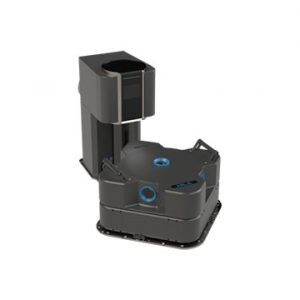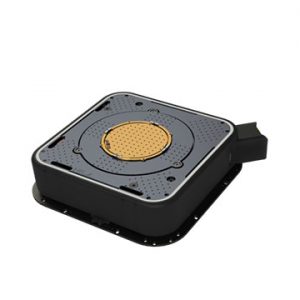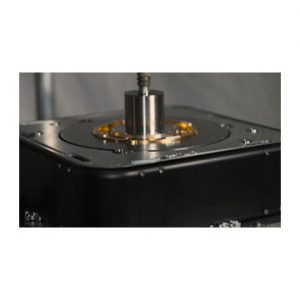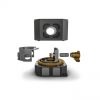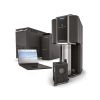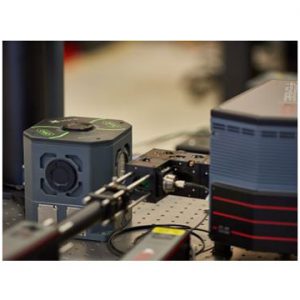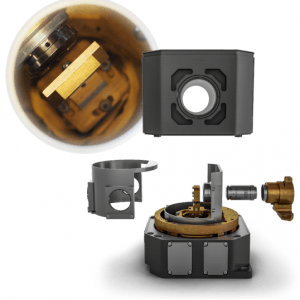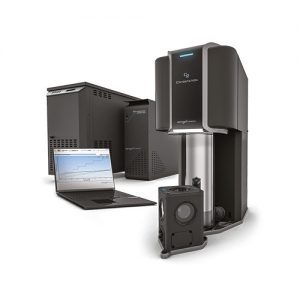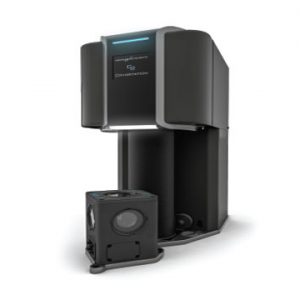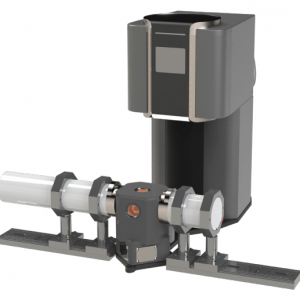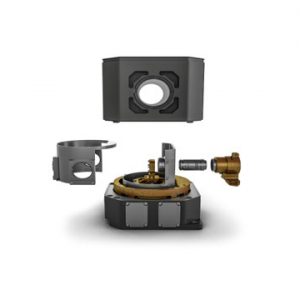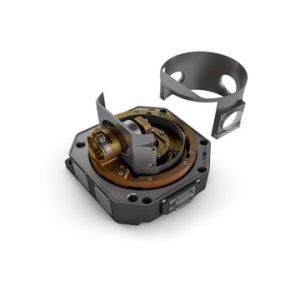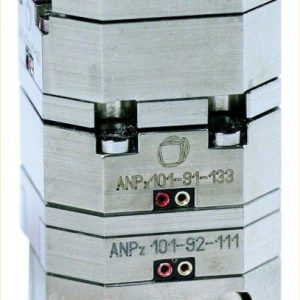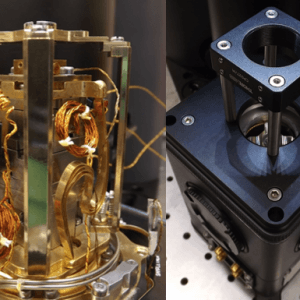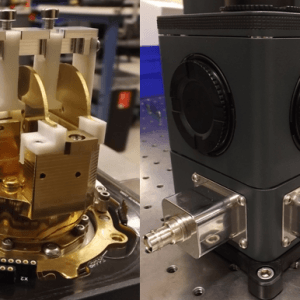HILA® – ATOMIC RESOLUTION OPTICAL CRYOSTATS
The HILA® name stands for High Inertia, Low Acceleration – a platform designed specifically to provide an ultra-stable mechanical environment for the most sensitive cryogenic measurements.
The HILA® name stands for High Inertia, Low Acceleration – a platform designed specifically to provide an ultra-stable mechanical environment for the most sensitive cryogenic measurements. The low resonance platform provides the lowest level of noise found in any closed-cycle system, with the same level of superior optical & sample access found in all Montana Instruments systems.
Overview
PERFORMANCE BENEFITS
- Multi-stage passive vibration damping technique isolates the cryogenic environment from both the vibrations of the cryostat itself and other sources of motion within a common lab environment
- Extremely low natural frequency of the cold sample platform (<0.6Hz) isolates energy for an ultra-stable mechanical environment
- Convenient & intuitive platform balancing and floating method is easily tunable to accomodate a large range of mass and mass distributions
- Closed-cycle operation means no helium is consumed, so users avoid the high costs, uncertain supply, and challenging operation associated with liquid cryogens
USABILITY BENEFITS
- Straightforward user interface and fully-automated control system increases experimental efficiency
- Incredible sample, electrical, and optical access provides total experiment flexibility
- Fully-integrated, turn-key design gets you up and running quickly with minimal effort
- Tabletop design integrates into existing setups and can be moved easily
MODELS
4.5K base, 20mK ptp stability, ø170mm, 0.024 m/s2 RMS accelerations (atomic resolution capable with SPM): Low frequency floating sample platform (<0.6Hz) isolates energy for an ultra-stable mechanical environment.
Add-On Options
Cryo-Optic (CO): Custom integration of a room temperature Cryo-Optic high NA objective (horizontally mounted) into the sample space.
| Series Architecture Letter | Sample Chamber Class # | Add-On Modules (abbr.) |
| System design & mounting schemes, cooling technology, performance & feature levels | Size & features inside the sample chamber and on the cold platform | Integrated modules which add additional capabilities for specific applications |
| >>Compare Architectures | >>Compare Size Classes | >>Explore Integrations |
Features
| Key Features | Key Benefits | |
|---|---|---|
| Cryostat | Ultra-stable closed-cycle optical cryostat | |
|
|
|
| Sample Space | Tabletop mounting architecture | |
|
|
|
| Thermal Stability | Rock solid temperature stability | |
|
|
|
| Mechanical Stability | Vibrations are no longer a concern | |
|
|
|
| Sample Drift | CTE-cancelling sample platform | |
|
|
|
| User Interface | Control via Windows based software on mini-laptop computer | |
|
|
|
| Remote Interface | TCP/IP and LabVIEW | |
|
|
|
| Control Unit | Powerful built-in electronics | |
|
|
|
| Compressor | Variable Flow Helium compressor | |
|
|
|
| Sample Mounting | Sample in vacuum | |
|
|
|
| Optical Substrates | Fused silica AR coated 400-1000nm | |
|
|
|
| CE Compliant | ||
Specification
HILA-8-22-17Related products
Montana Instruments
This low temperature Raman microscope integration is optimized for high collection efficiency and throughput,
offering free space Raman signal collection via the Princeton Instruments FERGIE™ spectroscopy
system.
Montana Instruments
The world’s first commercial single photon chip meets the industry leading closed-cycle optical cryostat.
The new SPARROW single-photon source is based on self-assembled InAs quantum dots coupled to a slowlight photonic-crystal waveguide made using a unique processing technology.
The proven performance of the Cryostation provides the ideal environment for the chip to operate.
Montana Instruments
The CRYOSTATION® crossover premium (xp) platform integrates pumped liquid helium cooling technology with the benefits of an automated, closed-cycle (helium-free) cryostat. Leveraging many of the proven technologies found in the original Cryostation systems, the xp-series retains the level of reliability, flexibility, and usability required to become a workhorse in any lab. The platform offers a turn-key […]
Montana Instruments
The CRYOSTATION® line has evolved from the original Montana Instruments system, which set new standards of performance and usability in a closed-cycle optical cryostat.
Montana Instruments
Transmission Mössbauer Spectrometer for the CRYOSTATION®
The Cryo Mössbauer offers a complete, integrated solution for variable temperature transmission mössbauer spectra measurements. The MS96 spectrometer is coupled with the Montana Instruments Cryostation
sample chamber in a straightforward and user-friendly design. Improve efficiency and quality of results with the combination of two industry-leading performance systems.
Montana Instruments
The CRYO-OPTIC® products integrate an optical objective into the sample space of the CRYOSTATION for high NA imaging at low temperatures.
Montana Instruments
The Montana Instruments Cryostation platforms can incorporate precision nanopositioning stages for translating, rotating, or tilting your sample. These are integrated directly into the sample space and include flexible thermal links which provide a thermal connection between the sample and cold platform while still allowing for full stage motion.
Montana Instruments
By serving researchers working on cutting-edge techniques, we understand standard options may be limiting for certain applications. In these cases, custom designed parts and modifications are required to create something nobody else has done before. A team of dedicated application specialists and custom design engineers are available to work with you to create a one-of-a-kind […]




